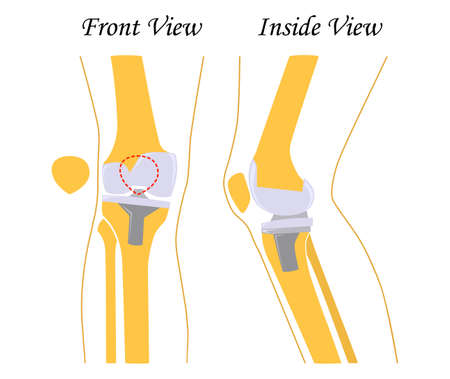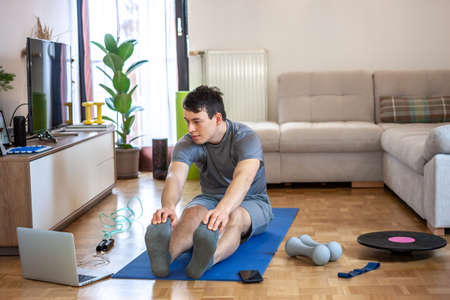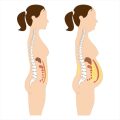1. Introduction to Outpatient Orthopedic Rehabilitation in the U.S.
Outpatient orthopedic rehabilitation is a key part of the American healthcare system, helping people recover from injuries, surgeries, or conditions that affect their bones, joints, and muscles. Unlike inpatient rehab, where patients stay at a hospital or facility, outpatient rehab allows patients to visit a clinic for treatment while living at home. This approach is popular across the United States because it supports independence and fits easily into most peoples daily routines.
Overview of Outpatient Orthopedic Rehab Settings
In the U.S., outpatient orthopedic rehab clinics are found in many settings—private practices, hospital-based centers, and community health facilities. Patients come in for scheduled appointments with physical therapists or other rehab professionals. Each session is tailored to address specific needs like pain reduction, improving mobility, or regaining strength after an injury or surgery.
| Setting Type | Description | Common Features |
|---|---|---|
| Private Practice Clinics | Independent clinics focused on orthopedic rehab | Personalized care, flexible scheduling |
| Hospital-Based Outpatient Centers | Rehab centers connected to hospitals | Access to more resources, collaboration with doctors |
| Community Health Facilities | Clinics serving local communities | Affordable options, broader patient demographics |
Cultural Expectations in American Rehab Care
American patients often expect clear communication about their diagnosis, progress, and treatment plan. There is a strong emphasis on patient rights and shared decision-making. Rehab professionals are expected to explain goals and answer questions in easy-to-understand language. Timeliness and respect for personal schedules are also highly valued by patients in the U.S.
The Patient-Centered Approach
A patient-centered approach is at the heart of American outpatient rehab. Therapists work closely with each individual to set realistic goals that matter most to them—whether it’s returning to work, playing sports again, or simply moving without pain. In this setting, progress monitoring is ongoing and transparent, ensuring that care plans can be adjusted as needed based on how the patient is doing.
2. Initial Assessment and Baseline Measurements
When you start outpatient orthopedic rehab in the United States, your journey begins with an initial assessment. This step is crucial for understanding your current condition and setting a strong foundation for your recovery plan. American therapists use a combination of typical evaluation procedures to get a clear picture of your baseline function.
Typical Evaluation Procedures
During your first visit, your physical therapist or occupational therapist will ask about your medical history, daily activities, and goals for rehab. They may also review any doctor’s notes or imaging studies you bring. The hands-on part of the evaluation usually includes:
- Range of Motion (ROM) Testing: Measures how far you can move a joint in different directions.
- Strength Testing: Assesses the power of specific muscles or muscle groups.
- Pain Assessment: Uses scales like the Numeric Pain Rating Scale (0-10) to rate your pain level.
- Functional Mobility Tests: Observes how you walk, climb stairs, or perform daily tasks.
- Special Orthopedic Tests: Checks for specific injuries or conditions (like rotator cuff tears or ligament instability).
Establishing Baseline Function
Your baseline measurements are recorded at this first appointment. This “starting line” helps track your progress over time and shapes the rehab goals that are right for you. Therapists often use both objective and subjective measurements to get a complete picture.
| Type of Measurement | Description | Example |
|---|---|---|
| Objective | Quantitative data collected through tests and tools | Goniometer measurement of knee flexion: 95° |
| Subjective | Your personal report of symptoms, feelings, and limitations | Pain level: 6 out of 10 when walking upstairs |
The Importance of Objective and Subjective Measurements
Both objective and subjective data are essential for successful rehab in the U.S. system. Objective measurements provide concrete numbers to show improvement, while subjective feedback makes sure treatment aligns with what matters most to you—like being able to play with your kids or return to work comfortably. By combining these two types of information, therapists can personalize your care and motivate you throughout each stage of recovery.

3. Goal Setting: Collaborative and Personalized Approaches
Why Goal Setting Matters in American Outpatient Orthopedic Rehab
Setting clear goals is a cornerstone of outpatient orthopedic rehab in the United States. Patients want to get back to their daily lives, regain independence, and return to activities they love—whether that’s playing with grandkids, going back to work, or enjoying sports. Involving patients in goal-setting helps boost motivation, commitment, and satisfaction throughout the rehab journey.
Strategies for Setting SMART Goals
The SMART framework is widely used by American therapists to help patients set meaningful and achievable goals. Here’s what SMART stands for:
| SMART Component | Description | Example in Rehab |
|---|---|---|
| Specific | Clearly define the goal | Walk 100 feet without crutches |
| Measurable | Track progress with numbers or checklists | Bend knee to 90 degrees within four weeks |
| Achievable | Make sure the goal is realistic for the patient’s condition | Lift 5 lbs safely after surgery |
| Relevant | Tie the goal to activities important to the patient’s lifestyle | Return to gardening by end of summer |
| Time-bound | Set a deadline for reaching the goal | Able to climb stairs independently in six weeks |
Involving Patients in Goal-Setting: A Team Approach
American rehab culture encourages open conversations between therapists and patients about what matters most to them. Therapists ask questions like, “What activities do you miss?” or “What does a good recovery look like for you?” Patients are encouraged to share their hopes, concerns, and priorities. This team approach leads to goals that are truly personalized and meaningful.
Steps for Collaborative Goal-Setting:
- Listen actively: Understand the patient’s background, values, and desired outcomes.
- Educate: Explain what’s possible based on medical evidence and prior recoveries.
- Create SMART goals together: Write down goals that fit both clinical guidelines and personal wishes.
- Review regularly: Adjust goals as the patient progresses or if priorities change.
Aligning with American Values: Independence & Activity
A major focus in American outpatient orthopedic rehab is helping people return to an active, independent lifestyle. Whether it’s getting back behind the wheel, walking the dog, or hitting the golf course, therapists use these values as motivation tools. Progress checks aren’t just about numbers—they’re about real-life wins that matter most to each person.
4. Monitoring Progress: Tools and Best Practices
Use of Outcome Measures
In American outpatient orthopedic rehab, therapists rely on standardized outcome measures to track a patient’s progress. These tools provide objective data about physical abilities and functional improvements. Common outcome measures include:
| Outcome Measure | Purpose | Example Use |
|---|---|---|
| Numeric Pain Rating Scale (NPRS) | Measures pain intensity | Patients rate pain from 0-10 at each visit |
| Range of Motion (ROM) Tests | Assesses joint movement | Track shoulder flexion or knee extension over time |
| Timed Up and Go (TUG) | Evaluates mobility and balance | Measure how quickly a patient can stand up, walk, and sit down |
| Functional Independence Measure (FIM) | Rates daily living skills | Used for patients with complex needs or after surgery |
Patient-Reported Outcomes (PROs)
Therapists in the U.S. often ask patients to share their own perspectives using questionnaires or digital surveys. These patient-reported outcomes help capture symptoms, pain levels, and quality of life changes that may not show up in physical tests. Popular PROs include the Oswestry Disability Index for back pain and the QuickDASH for arm injuries.
Technology Integration in Rehab Settings
Electronic Medical Records (EMRs)
Most American rehab clinics use EMRs to document every session. This technology allows therapists to easily compare past and current notes, graph progress over time, and share updates with other healthcare providers if needed.
Wearables and Mobile Apps
Pedometers, smartwatches, and rehab-focused apps are becoming more common in outpatient care. These devices can track steps taken, heart rate, or even specific exercises completed at home. Therapists use this data to adjust treatment plans and encourage patients to stay active between visits.
Progress Documentation Best Practices
- Consistent Tracking: Documenting objective measures (like range of motion) at regular intervals helps spot trends quickly.
- Clear Communication: Progress is shared with patients at every appointment so they know what’s working and where to focus next.
- Visual Feedback: Charts or graphs from EMRs make it easier for patients to see their improvements over time.
- Goal Alignment: All progress notes are tied back to the original goals set during evaluation, making care more personalized and motivating.
5. Adjusting Plans and Communicating Progress
How Therapists Reassess Patient Progress
In American outpatient orthopedic rehab, therapists regularly check how patients are doing. They use tools like range of motion measurements, strength tests, pain scales, and patient-reported outcome surveys. These assessments happen at scheduled intervals or whenever there’s a noticeable change in the patient’s condition.
Common Tools for Reassessment
| Assessment Tool | Purpose | Frequency |
|---|---|---|
| Goniometer | Measures joint angles and range of motion | Every few sessions or weekly |
| Dynamometer | Tests muscle strength | Every 2-4 weeks or as needed |
| Pain Scale (0-10) | Tracks pain levels over time | Every session |
| Patient Questionnaires (e.g., DASH, LEFS) | Assesses function and daily activity capability | Monthly or at progress checks |
Modifying Rehab Plans Based on Progress
If reassessment shows that a patient is improving faster or slower than expected, therapists will adjust the treatment plan. For example, exercises may be made harder if recovery is ahead of schedule, or they might slow things down to prevent injury if there’s pain or setbacks.
Examples of Plan Adjustments
- Progression: Adding weights, resistance bands, or new exercises when goals are met early.
- Regression: Reducing intensity or frequency if pain increases or function declines.
- Alternative Strategies: Incorporating modalities like ice/heat, electrical stimulation, or manual therapy if progress stalls.
Communicating Changes with Patients and Families
Clear communication is key in American rehab settings. Therapists explain why changes are made in simple terms and involve patients in decision-making. Family members are often included, especially if they help with home exercises or transportation. Written instructions, exercise handouts, and digital reminders are commonly provided.
Sample Communication Methods
| Method | Description |
|---|---|
| Face-to-Face Conversation | Main way to discuss progress and changes during appointments. |
| Email/Secure Messaging Portals | Used for follow-up questions and sharing updates between visits. |
| Printed Home Exercise Programs (HEPs) | CLEAR step-by-step instructions for at-home care; updated as plans change. |
| Caregiver Meetings/Phone Calls | If family support is important for rehab success. |
Working with the Broader Healthcare Team
The therapist often connects with doctors, nurse practitioners, case managers, and sometimes insurance representatives to keep everyone on the same page. Updates are shared through electronic health records (EHRs), phone calls, or team meetings. This coordinated approach helps ensure safe and effective care for each patient.
Main Points When Communicating with Healthcare Teams:
- Status updates after reassessment (improvement, plateau, setbacks)
- Description of plan modifications (new goals, adjusted timelines)
- Requests for additional referrals (e.g., pain management, orthopedic follow-up)
- Description of barriers to progress (compliance issues, social factors)
This ongoing process of assessment, adjustment, and open communication ensures that every patient receives personalized care tailored to their needs throughout their rehab journey in the American healthcare system.

